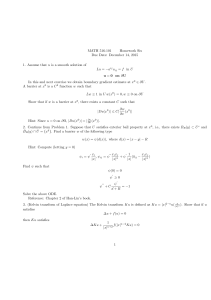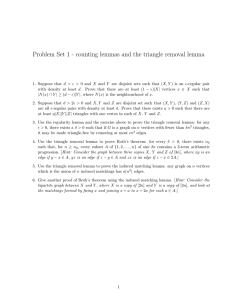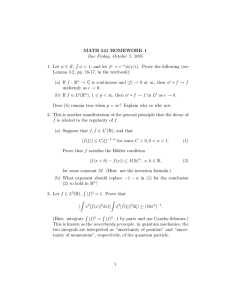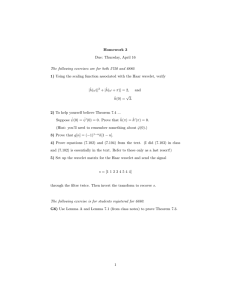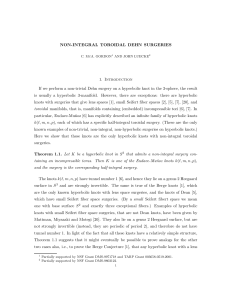Problems for Recitation 8
advertisement
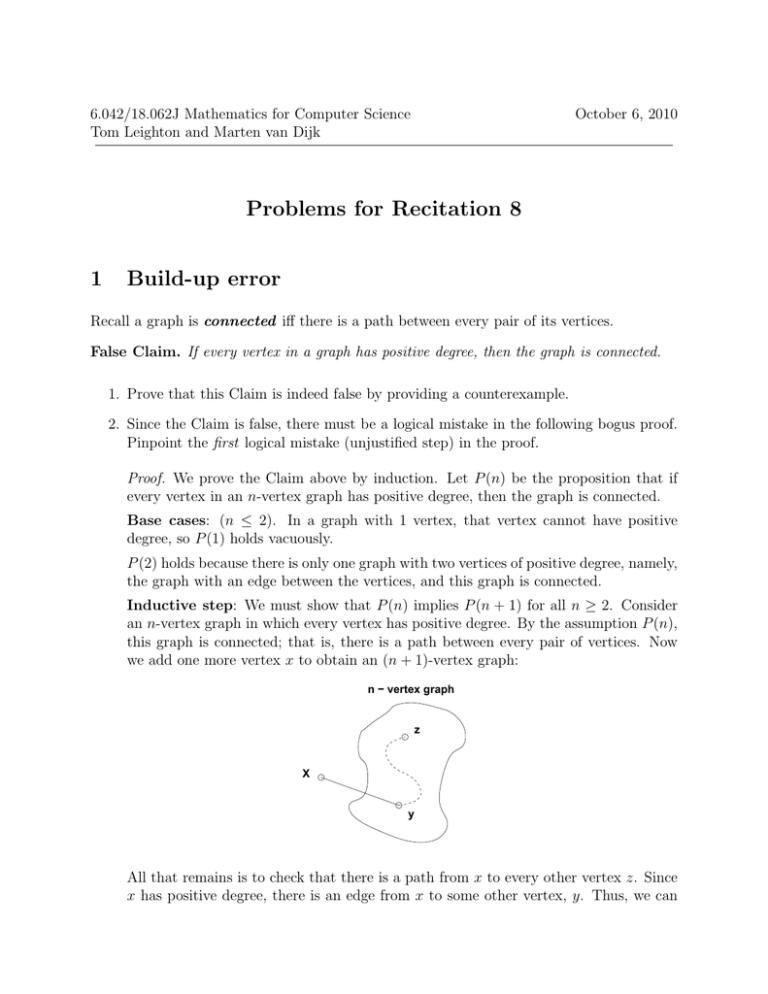
6.042/18.062J Mathematics for Computer Science
Tom Leighton and Marten van Dijk
October 6, 2010
Problems for Recitation 8
1
Build-up error
Recall a graph is connected iff there is a path between every pair of its vertices.
False Claim. If every vertex in a graph has positive degree, then the graph is connected.
1. Prove that this Claim is indeed false by providing a counterexample.
2. Since the Claim is false, there must be a logical mistake in the following bogus proof.
Pinpoint the first logical mistake (unjustified step) in the proof.
Proof. We prove the Claim above by induction. Let P (n) be the proposition that if
every vertex in an n-vertex graph has positive degree, then the graph is connected.
Base cases: (n ≤ 2). In a graph with 1 vertex, that vertex cannot have positive
degree, so P (1) holds vacuously.
P (2) holds because there is only one graph with two vertices of positive degree, namely,
the graph with an edge between the vertices, and this graph is connected.
Inductive step: We must show that P (n) implies P (n + 1) for all n ≥ 2. Consider
an n-vertex graph in which every vertex has positive degree. By the assumption P (n),
this graph is connected; that is, there is a path between every pair of vertices. Now
we add one more vertex x to obtain an (n + 1)-vertex graph:
n − vertex graph
z
X
y
All that remains is to check that there is a path from x to every other vertex z. Since
x has positive degree, there is an edge from x to some other vertex, y. Thus, we can
Recitation 8
2
obtain a path from x to z by going from x to y and then following the path from y to
z. This proves P (n + 1).
By the principle of induction, P (n) is true for all n ≥ 0, which proves the Claim.
2
The Grow Algorithm
Yesterday in lecture, we saw the following algorithm for constructing a minimum-weight
spanning tree (MST) from an edge-weighted N -vertex graph G.
ALG-GROW:
1. Label the edges of the graph e1 , e2 , . . . , et so that wt(e1 ) ≤ wt(e2 ) . . . ≤ wt(et ).
2. Let S be the empty set.
3. For i = 1 . . . t, if S ∪ {ei } does not contain a cycle, then extend S with the edge ei .
4. Output S.
2.1
Analysis of ALG-GROW
In this problem you may assume the following lemma from the problem set:
Lemma 1. Suppose that T = (V, E) is a simple, connected graph. Then T is a tree iff
|E| = |V | − 1.
In this exercise you will prove the following theorem.
Theorem. For any connected, weighted graph G, ALG-GROW produces an MST of G.
(a) Prove the following lemma.
Lemma 2. Let T = (V, E) be a tree and let e be an edge not in E. Then, G =
(V, E ∪ {e}) contains a cycle.
(Hint: Suppose G does not contain a cycle. Is G a tree?)
(b) Prove the following lemma.
Recitation 8
3
Lemma 3. Let T = (V, E) be a spanning tree of G and let e be an edge not in E.
Then there exists an edge e� =
� e in E such that T ∗ = (V, E − {e� } ∪ {e}) is a spanning
tree of G.
(Hint: Adding e to E introduces a cycle in (V, E ∪ {e}).)
(c) Prove the following lemma.
Lemma 4. Let T = (V, E) be a spanning tree of G, let e be an edge not in E and let
S ⊆ E such that S ∪ {e} does not contain a cycle. Then there exists an edge e� =
� e in
E − S such that T ∗ = (V, E − {e� } ∪ {e}) is a spanning tree of G.
(Hint: Modify your proof to part (b). Of all possible edges e� =
� e that can be removed
to construct T ∗ , at least one is not in S.)
(d) Prove the following lemma.
Lemma 5. Define Sm to be the set consisting of the first m edges selected by ALG­
GROW from a connected graph G. Let P (m) be the predicate that if m ≤ |V | then
Sm ⊆ E for some MST T = (V, E) of G. Then ∀m . P (m).
(Hint: Use induction. There are two cases: m + 1 > |V | and m + 1 ≤ |V |. In the
second case, there are two subcases.)
(e) Prove the theorem. (Hint: Lemma 5 says there exists an MST T = (V, E) for G such
that S ⊆ E. Use contradiction to rule out the case in which S is a proper subset of
E.)
MIT OpenCourseWare
http://ocw.mit.edu
6.042J / 18.062J Mathematics for Computer Science
Fall 2010
For information about citing these materials or our Terms of Use, visit: http://ocw.mit.edu/terms.

![MA1124 Assignment5 [due Monday 16 February, 2015]](http://s2.studylib.net/store/data/010730348_1-77b9a672d3722b3831a1e52597d5a881-300x300.png)
